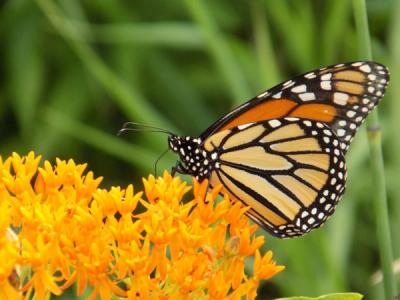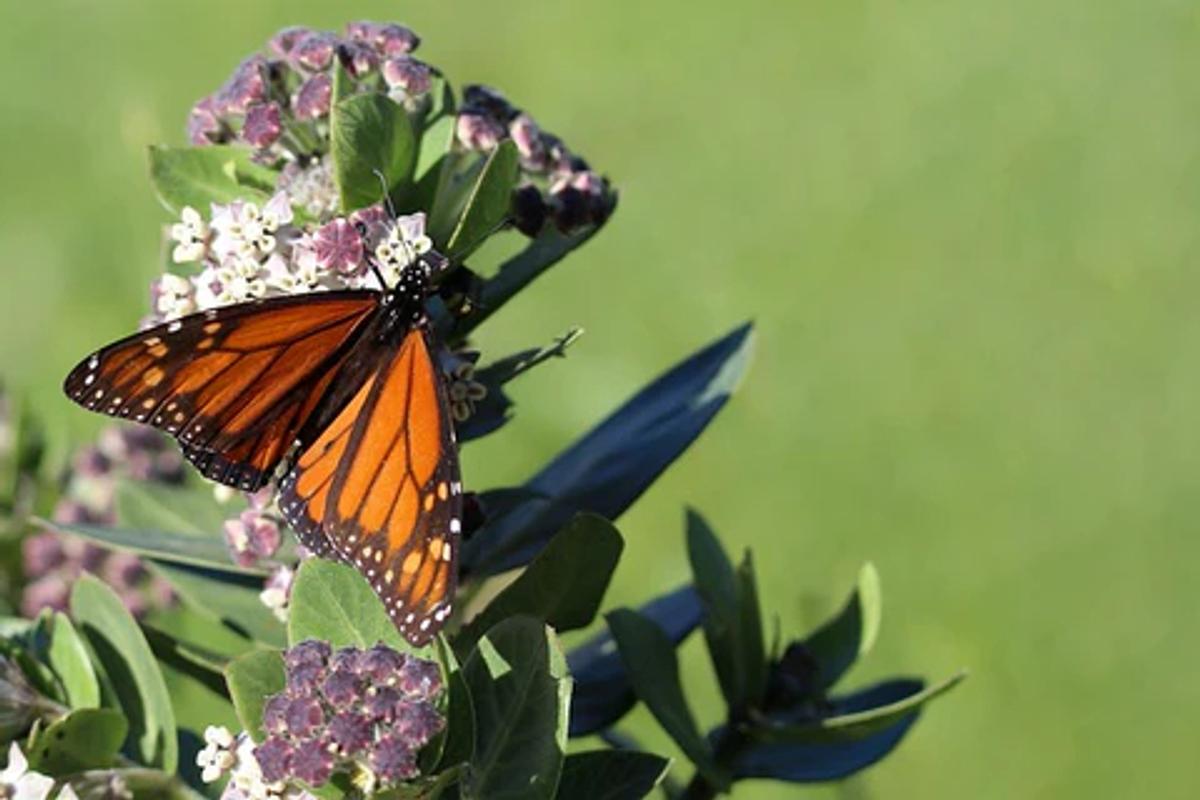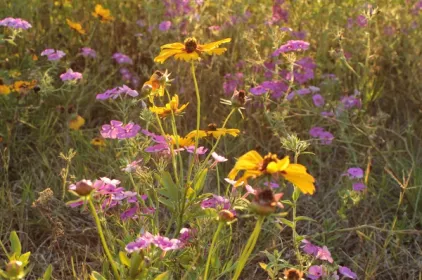How can I help endangered Monarch Butterflies? And how can planting milkweed help?

Discover how you can help save the endangered monarch butterflies by taking simple steps towards conservation. Check out My Home Park's native plant collections, designed to support your efforts in supporting various pollinators like Monarch butterflies.
Ever hear of an insect capable of traveling thousands of miles each year and crossing international borders? Meet the Monarch Butterfly (Danaus plexippus) - a creature weighing less than half a gram that possesses a remarkable migratory ability. Every year, millions of Monarch Butterflies embark on a fascinating journey from Canada and North America to the overwintering sites of Mexico and California.
Despite their tiny size, Monarch Butterflies are true masters of navigation, as their DNA is coded to rely on the earth's magnetic field and sun's position to find their way. Furthermore, their vibrant colors of orange and black alongside an attractive pattern of white dots, makes them one of the most gorgeous looking butterfly species on the planet.
Sadly, these fascinating creatures are facing a rapid decline in their population. Experts estimate that the western population has shrunk by almost 99.9% (between 1980's to 2021) while the eastern population shrunk by 84% (between 1996 to 2014). As a result, Monarch Butterflies have now entered the IUCN Red List of Threatened species in the Endangered category.
But, there's still hope! As homeowners, we have the power to save monarch butterflies by taking small steps to restore their habitats and reduce the threats they face. In this article, we will delve deeper into the reasons behind the decline of Monarch populations and provide actionable steps on how we can all make a positive difference.
Why is the Monarch Butterfly a threatened species?
There are several reasons why Monarchs are now considered an endangered species and face an uncertain future. Here are the main factors:
Breeding Habitat Destruction
Monarch Butterflies in the US come in two variations - Eastern and Western. The Eastern Monarchs migrate all the way from Canada to the forests of Central Mexico, while Western Monarchs take a shorter route to coastal California. During their journey, they rely on breeding grounds in the US that are rich in milkweed plants, the only plant where Monarchs can lay eggs and the young Monarch caterpillars can feed.
However habitat loss, caused by urban development and deforestation, is wiping out native milkweed plants, posing a serious threat to the existence of these beloved insects.
Widespread Usage of Insecticides and Chemicals
Another factor contributing to the extinction of Monarch Butterflies is the widespread use of pesticides in agricultural fields and residential areas. Along with killing garden and farm pests, these chemicals also end up destroying milkweed patches that serve as crucial habitats for monarchs, as discussed above. Without adequate milkweed, it's not possible for monarchs to survive.
Shrinkage of Overwintering sites
To survive the winter months, Monarch Butterflies rely on specific overwintering sites in Mexico and California, which have all the necessary conditions to create a suitable winter habitat. However, the rapid decline of these natural ecosystems due to climate change, illegal logging and urbanization are also threatening the survival of Monarchs that have depended on these sites for thousands of years.
Why is the protection of Monarch Butterflies important?
Apart from gracing our skies with their grace and beauty, Monarch Butterflies also play a vital role in preserving the health of the planet. They serve as crucial pollinators, transferring pollen from one plant to the other and thereby enabling the growth and reproduction of many plants. Additionally, Monarchs have become an important part of the food chain by turning into a key source of nutrition for many birds, insects and small animals.
What can I do to help Monarch Butterflies?

1. Plant milkweed
Create a safe butterfly haven in your yard by planting native milkweed plants. These plants act as breeding stations for monarch butterflies to lay their eggs and raise their caterpillars. Increasing milkweed patches in key monarch migratory areas will help in increasing their population.

There are more than 20 varieties of milkweed plants native to the U.S. It's important to choose milkweeds well-suited to your region, to increase the chances of successful breeding and growth for the monarch population. My Home Park offers a handful of species to find a fit for almost any yard to which our growers can ship.
2. Eliminate Chemicals in your Yard
Herbicides and pesticides kill beneficial insects like monarchs, along with common garden pests and harmful bugs. Choose eco-friendly pest repellents or even better, opt for natural pest control methods like planting different species, which also helps in increasing plant diversity in your yard.
3. Always buy Native plants from a reputable store
Most nurseries and online businesses ship native plants which are either not well-suited to your region or have been sprayed with lots of chemicals to ward off diseases. These plants won't serve your purpose as they may not adapt well and cannot fulfill the needs of monarchs. As discussed above, chemicals on these plants may also end up harming the caterpillars and cause deformed butterflies.
To avoid these issues, we highly recommend buying native plants from a reputable source like My Home Park. Our selection of native milkweed varieties, along with a wide range of nectar and pollen-producing plants, supports monarchs and promotes biodiversity.

4. Spread Awareness
Talk to your friends and family to spread awareness about the fate of monarch butterflies and encourage them to take part in conservation actions. Guide them on how they can take simple steps such as planting milkweed and avoiding pesticide use to preserve the future of these magnificent creatures.
My Home Park's Native Plant Collections for Monarch Butterflies

At My Home Park, we're dedicated to protecting the future of monarch butterflies. That's why we've curated some of our native plant collections like Milkweed Meadow and Butterfly Boulevard, to help in monarch butterfly conservation. Along with a variety of nectar and pollen generating native plants, these collections feature butterfly milkweed (Asclepias tuberosa) and Red Milkweed Asclepias incarnata), which serve as a vital host plants for monarch butterflies.
By purchasing native plant collections from My Home Park, you can be assured of bringing home chemical-free native plants that are well-suited to your region. The best part is that these collections are all low-maintenance and beginner-friendly.
So, if you want to do your bit towards protecting endangered monarch butterflies, there's never been a better time to take action! Browse our native plant collections and kickstart your journey as a monarch butterfly steward today!

Share this article


